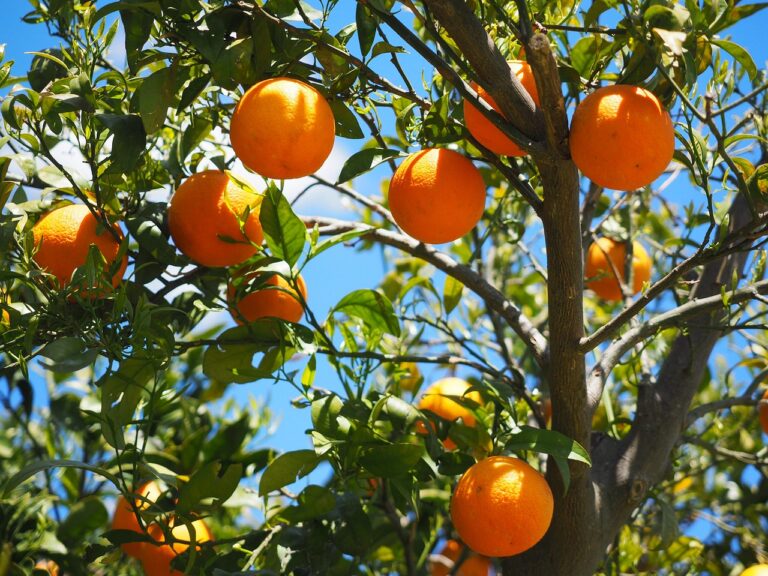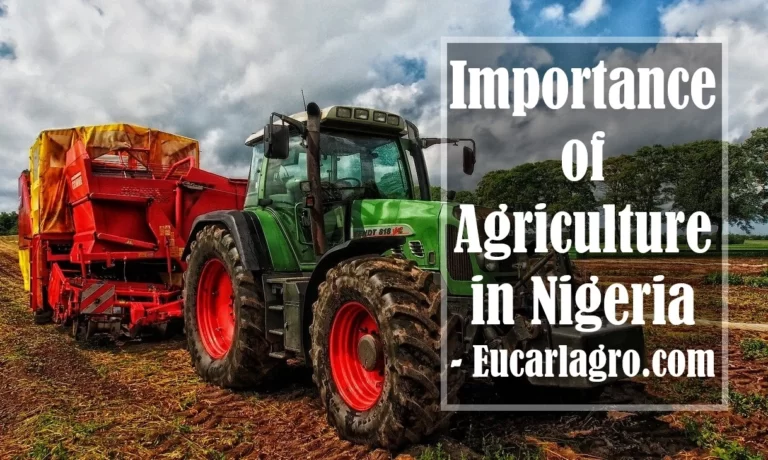Groundnut Farming Processes Made Simple
Groundnut or peanut farming is quite easy if you follow the simple steps outlined in this article. Here, we have highlighted the groundnut farming processes, how you can grow your peanuts quickly, the best soil types for groundnut cultivation, and other juicy details.
Step by Step Guide on the Groundnut Farming Processes
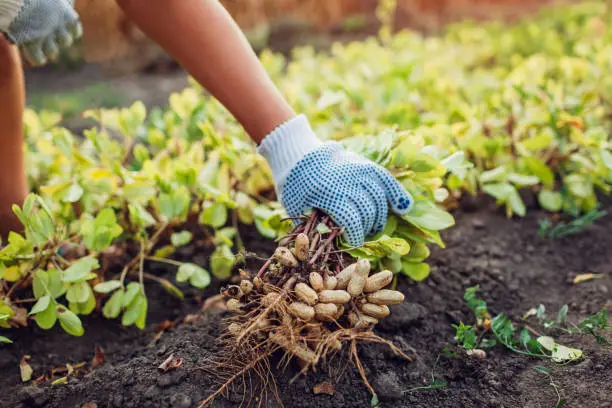
1. Choosing the Best Soil for Growing Groundnuts
One of the groundnut farming processes that determine the kind of harvest you can make from your cultivation is the kind of soil you plant your crops in.
Peanuts are viable in almost of kinds of soil types but there are some specific soils where their productivity is greatly increased.
Groundnut pods grow underground so a mixture of humid but well-drained clay and sandy loam soil will work well for easy root penetration.
On the climatic requirements for groundnut cultivation; semi-arid areas are highly fertile but you should first conduct a soil test to know the soil components. The soil pH should be neutral between 6.5 – 7.0 and the soil temperature between 18 – 30°C. This would help increase the seed’s germination rate and water retention capacity.
The site used for groundnut cultivation should not be waterlogged, nor should it be dry and crusty. The soil should contain adequate amounts of iron, zinc, potassium, phosphorous, and nitrogen. Where this is not available, you can substitute it with quality fertilizers.
2. Fertilisers and Manure Application for Groundnut Farming
The fertilizers to be used during the groundnut farming processes should be well enriched with nitrogen, phosphorous, and potassium (NPK Fertilisers). It may also contain sulphur, calcium, and magnesium.
Before going to purchase any fertilizer for your groundnut farm, you should first conduct a soil test to find out what nutrients are lacking in the soil, the pH of the soil, water retention capacity, minerals and organic matter present in the soil.
Without this, you shouldn’t head on to buy fertilizers or even organic manures. However, kitchen composts may not have adverse effects here, so you can dump them on your farm at any time.
Chicken manure and cow dung application are also good Groundnut farming processes that should be done at least once before cultivation.
3. Land Preparation and Plot design for Groundnut Farming
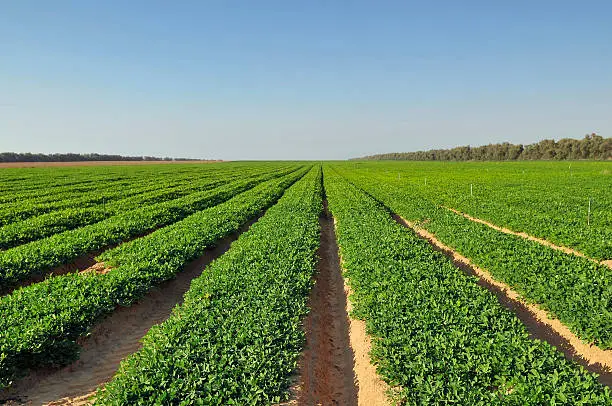
The land to be used for the groundnut cultivation practices should be well cleared. It should be tilled and harrowed to break down lumps of soil and reduce the incidence of groundnut rots.
Ploughing is usually done after the first rain of the season to make the soil soft but not too damp or muddy. At this time, summer is not yet over but gradually fading. Weed sprouts would due off from the scorching sun as their roots are well exposed.
Ridges are heaped with the number of rows and plot size in consideration. The ridges should not be too high as in cassava cultivation or too low as seen in vegetable plantations. It should be medium to deeply root the groundnut sprouts.
4. Seed Selection and Treatment for Groundnut Cultivation
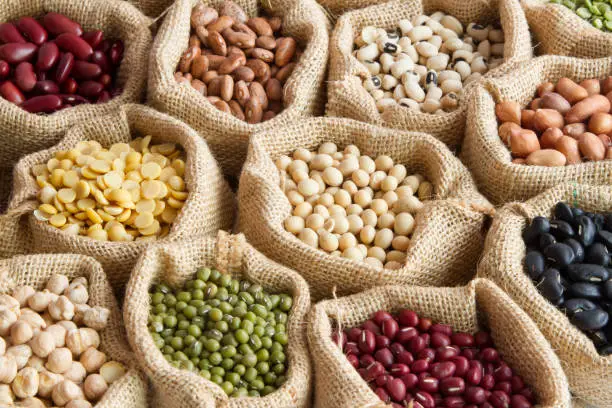
Peanut cultivation requires the use of quality and viable seeds. Groundnut pods that are plump can be used for Peanut farming, however, if the seeds have been in store for a long time, it should not be planted.
Groundnut seeds are susceptible to pest damage and fungal diseases during these periods. They may have split kernels and uneven pod colouration.
The peanut cultivation techniques for optimum performance of plants suggest that bold nuts are better preferred to the smaller pods. This can be observed in their number of branches, pod yield, and pod size.
You can coat the seeds with pesticides such as Thiram or Bavistin.
5. How to Plant Groundnut Seeds
You cannot really say that you have gone through most of the groundnut farming processes without landing on the planting itself. Planting should be done when the weather is cool and the sun is not yet out, either very early in the morning or in the evening.
Going to plant your peanuts under the sun may cause the harsh sun rays to wither the seeds and result in a failed germination.
The spacing for the seeds should be about 40cm between each groundnut plant and 50cm between the rows. The seeds should be placed at a depth of 5 – 7cm.
6. Irrigation Farming System for Groundnut Production
If the soil is too dry in your region, you may want to irrigate your farm before planting your groundnuts. For this, you can make use of a groundnut farming sprinkler to moisten the soil before. This is done to ensure adequate water supply to the upper root zones of the crop without necessarily waterlogging the lower roots.
7. Crop Rotation For Groundnut Farming
Crop rotation is an important aspect of groundnut farming processes. It helps to properly circulate nutrients between different farm crops. It is also efficient for reducing the spread of soil diseases such as rhizobia and nematodes.
Groundnut crops can be grown alongside with smaller grain crops like maize, millet, wheat,or sorghum. Rice is not recommended for this, because they require waterlogged areas which is boring favour of the groundnut seeds.
8. How To Control Weeds on Groundnut Farm
Regardless of how careful you may be, weeds will surely show up on your farm. The question here is, how do you get rid of those pesky weeds? Weed control and be done manually by uprooting the weeds with a sickle when the groundnut sprouts are between 3 – 4 weeks, or with the use of chemicals during the 6th week. Machines can also be used for groundnut weed control.
9. Harvesting Your Groundnuts
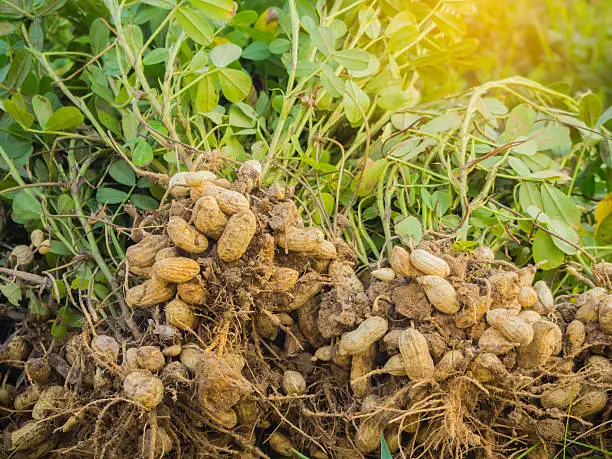
It is best to know the right time to harvest your groundnut pods. Doing this prematurely may result in poor yield, lesser pod size, and chances of soil diseases. The pod stem may also become weak and fail to continue germination.
Your groundnuts would be fully mature when it is between 2 – 3 months. You can easily observe this with the yellow fade spots on the groundnut leaves.
If you are still unsure about the seeds, you can harvest some of the crops and check to see if the pods properly filled the husks and if the seeds are becoming darker.
The harvesting processes for groundnuts include digging, pruning, and threshing.
After harvesting the seeds, spread them out on the field to be sun-dried and to reduce their moisture content. You can store the harvested Groundnut pods in bags stacked on planks above the ground.
10. Processing and Marketing of Groundnut
You can now package your peanuts and sell them to marketing agents, mills, and other available buyers. Some agritech companies work with large-scale farmers to process and market their farm produce.
Now we have gone through all the groundnut farming processes, let us conclude with the importance of groundnut farming.
Benefits of Groundnut Farming
Groundnuts or peanuts farming is a lucrative agricultural business venture that requires minimal resources if properly managed. The following are the uses of groundnuts both as a food crop or cash crop:
1. Groundnuts Are Used In Oil Production
Peanuts are very nutritious and can be cold-pressed to extract oil. This vegetable oil popularly known as groundnut oil can be used in cooking and frying foods.
2. Groundnuts Can Be Taken Alone As A Snack
Groundnuts can be boiled or roasted and eaten alone. They are also used in food combos such as groundnut and bread, groundnut and corn, and groundnut and cassava Flakes, among others.
3. Peanuts Are Used In The Production of Confectioneries and Special Dishes
Groundnuts can be crushed and used for making peanut butter – a bread spread. Nigerians use groundnuts for making groundnut soup, groundnut cakes (kuli kuli) and groundnut stew (maafe). Ghanaians also use peanuts for making groundnut butter soup (nkatenkwan).
4. They Serve As Export Cash Crops
Raw groundnuts are high in demand because they can be sold both locally and internationally. This is also the same in cashew farming. More gains can be derived from exports and large-scale marketing.
5. Groundnuts Are Industrial Raw Materials
These nuts when bought by investors can be used industrially in the production of paints, lubricating oils, varnishes, insecticides, and polishes, among others. They are also used by cosmetics brands and companies for making soaps, powders, and other beauty products.
In the clothing industry, groundnut fibers can be used for making synthetic fabrics. The groundnut husks are not entirely useless as they can be used in stoking flames when cooking on firewood, ground for making abrasives, or process for making paper and boards.


![How to Start Pig Farming Business in Nigeria ([year]) How to Start Pig Farming Business in Nigeria](https://eucarlagro.com/wp-content/uploads/2023/07/How-to-Start-Pig-Farming-Business-in-Nigeria-768x512.jpg)


